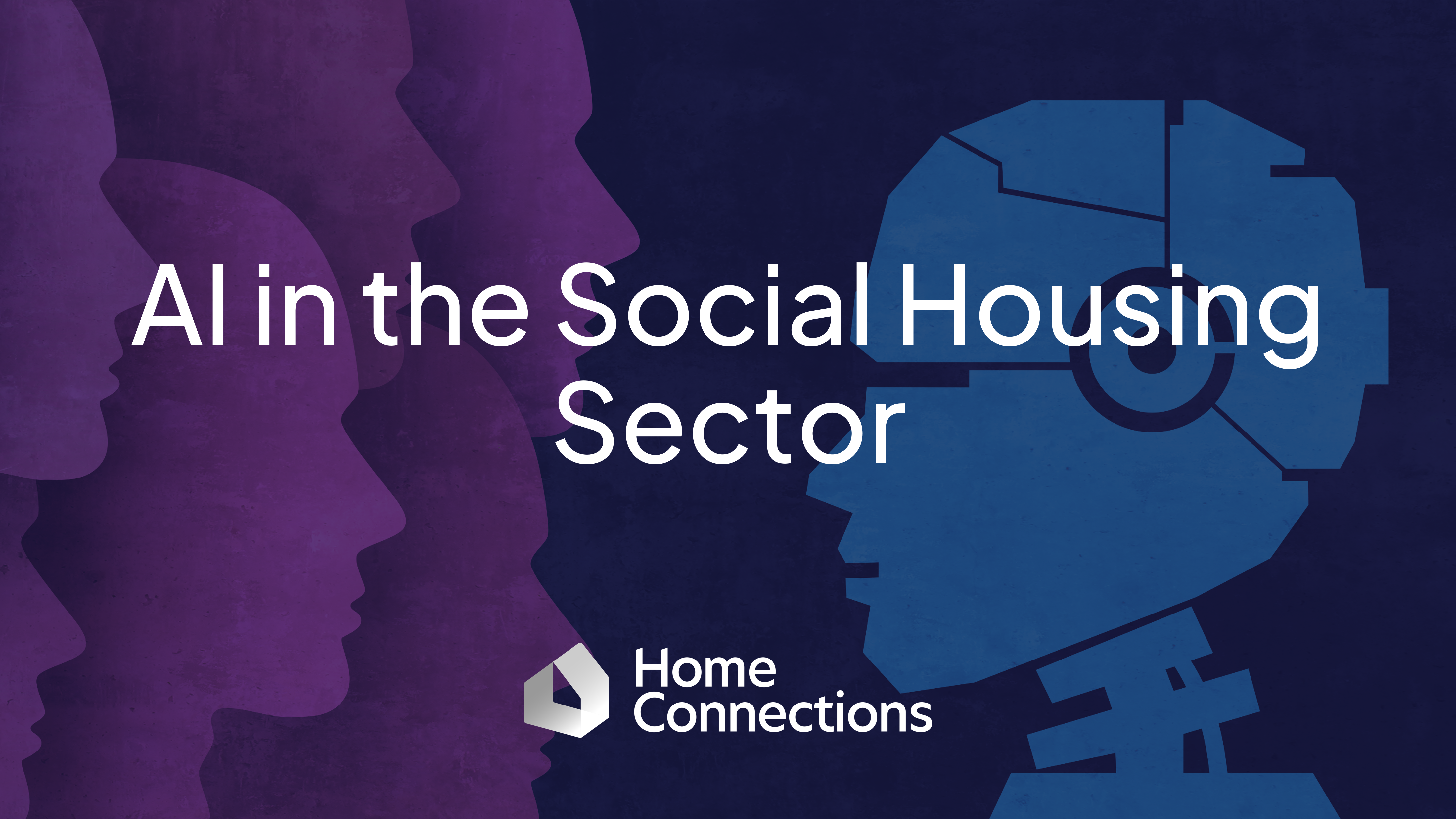How is the housing sector is going to utilise Artificial Intelligence

Artificial intelligence (AI) is one of the most exciting and rapidly evolving fields of technology today. But what exactly is AI, and what impact will it have on the social housing sector?
This blog post is adapted from the presentation delivered by Aashna Vishal Rachh, Data Analyst at Home Connections during our Connections Forum Scotland event, titled "AI in the Social Housing Sector"
What is AI?
According to IBM, an American multinational technology corporation, AI utilizes computers and machines to replicate the problem-solving, decision-making, learning, reasoning, and understanding natural language capabilities as observed in the human mind.
Subsets of AI
How does it do that? These machines are computational systems that are powered by algorithms and models such as Machine Learning, Deep Learning and Neural Networks which are subsets of AI that enable them to improve their performance on a specific task over time.
These subsets are specialized branches that address particular challenges.
Machine Learning
In Machine Learning, the machine learns from the data provided to them and identifies patterns to be able to make predictions or decisions based on that learned knowledge

For example, Amazon uses machine learning to recommend products to a specific customer based on what they’ve looked at and bought before.
Deep Learning
Deep Learning is a specific approach within Machine Learning that learns and makes sense of complex patterns in data and that’s why requires more data to be able to produce more accurate insights and predictions unlike machine learning, which requires less data. Enterprises generally use deep learning for more complex tasks, like virtual assistants or fraud detection.
Neural Networks
Neural Network is the backbone of deep learning algorithms which is inspired by the structure and functioning of a human brain as shown in the diagram.
AI vs. Machine Learning vs. Deep Learning vs. Neural Networks: What’s the difference? - IBM
Applications of AI
Natural Language Processing
There are many applications of AI which use these algorithms. Out of those many, I am going to talk about 2 of them. Natural Language Processing which is concerned with giving computers the ability to understand text and spoken words in much the same way human beings can, utilizes deep learning and neural networks to do so.
There’s a good chance you’ve interacted with NLP in the form of voice-operated GPS systems, digital assistants, speech-to-text dictation software and customer service chatbots. ChatGPT is a well-known example of a Natural Language processing tool.
What is natural language processing (NLP)? - IBM
Computer vision
Computer vision, which aims to teach machines to interpret and understand visual information from the world, similar to how humans perceive and make sense of visual data also utilizes deep learning and neural networks. This can be used in applications such as image recognition and classification, object detection as you see in CCTV cameras, Tesla cars and many more.
What is not AI?
Having spoken about what AI exactly is, many people mistakenly consider other technological areas as purely AI.
Automation
For instance, Automation is often confused with AI. Automation is fixed on repetitive, and follows predefined instructions, and after it performs its job, it thinks no further. You can think of Automated e-mails sent to customers as an example: If you program a robot to do a set of instructions such as navigate to a designated location, pick up the object on the table and return to the same position. The robot will follow the same set of instruction and think or do nothing further unless AI is involved in it.
Whereas AI can make predictions learn from the data, take decisions based on the data provided to them and adapt to UNSEEN situations.
Data Science
Although data science and AI are closely related, they are not the same. data science is a broader field that includes extracting valuable insights from the data using a lot of techniques such as machine learning which is a common factor of AI and data science. But AI involves creating intelligent systems, learn from experiences and improve performance with time.
Internet of Things (IoT)
Next, Most of the IoT i.e. Internet of Things items are made with sensor technology connected to the internet. People often mistake “automatic” doors or “smart” televisions to be purely AI. But that is not the case. “Smart” gadgets are an integration of both IoT and AI.
For instance, a “smart” home security camera is made up of sensor technology as well as AI but is not purely AI. It uses sensors to sense movement and AI to detect the object. However, AI and IOT is considered as a very powerful combination together which helps organizations achieve their objectives.
Things that are called ML/AI that really aren’t - Functionize
Data Science and Artificial Intelligence: Learn Differences - SimpliLearn
Machine Learning or Automation: What’s the Difference? - Business News Daily
AI in the Housing Sector
According to IBM, updated July 2023, about 35% companies globally, are using AI, and another 42% are exploring the technology.
AI can give your business a competitive advantage. Integrating customised AI models into your workflows and systems, and automating functions such as customer service and cybersecurity, can help a business meet customers’ expectations, both today and in the future.
How can AI be used in the social housing sector?
In the housing sector, AI could be used to make many processes easier.
Analytics
For instance, it can be used to analyse historical information such as past allocation data, social housing demands, economic and demographic trends to predict future need for social housing. This could make a great contribution towards eventually reducing or even eradicating homelessness.
Customer facing chatbots
Virtual AI assistants such as chatbots can offer a convenient way for the users to raise support queries, ask FAQs or ask questions about your websites. Chatbots play an important role in assisting users 24/7 and in non-working hours, freeing up the employees for other important tasks. Voice assistants such as Alexa have also made things easier and faster for the users.
Staff facing chatbots
Many organisations have started using ChatGPT Enterprise to ease up the work of case workers for example, who manually recorded and noted down each user case they handled. The Speech-to-text recognition feature called Whisper in ChatGPT Enterprise, could be first used to convert the spoken words into text, and the text could be used to summarize their case in ChatGPT assisting the case workers to pick and prioritise the actions they need to take next to manage the user’s case.
Social Housing Speed Read: Artificial Intelligence - a new dawn for social housing - Ward Hadaway
How AI can assist councils with social housing allocations - LocalGov
Introducing ChatGPT Enterprise - OpenAI
AI at Home Connections
Currently, at Home Connections we are implementing a chatbot in one of our services. There are a lot of AI tools such as Microsoft Azure Services and ChatGPT which allows customisation of the chatbots according to your customers’ needs. We aim to customise our chatbot using the Microsoft Azure AI Services according to what our website offers and user needs.
We, at Home Connections envision to make ethical use of AI so as to work towards one of our most important goals of eradicating homelessness.
Ethics in AI
It's incredibly important to keep the information safe when using AI in social housing or in any other sector for that matter.
Data privacy and security
Since AI relies heavily on data, we need to make sure that the data is handled securely, and nobody can use it without permission. Protecting the data is a big priority to make sure people's privacy is respected and to keep everything secure. While handling sensitive data such as age, gender, disability, etc.
Data de-identification, a method of dynamic data masking, which involves the separation of data from the individual it’s linked to, by eliminating or altering sensitive values without changing the underlying data, needs to be carried out. This facilitates easy and more secure sharing of data with third parties.
Unbiased practices
Developing AI models requires careful attention to prevent biases that may lead to unfair outcomes. Clear and understandable AI outcomes are vital. AI should not be seen as an opaque system with hidden processes usually known as a “black box”. Building trust with stakeholders relies on transparency and accountability.
Transparency and responsibility
Organisations should confirm that AI vendors include KPIs focused on fairness, accuracy, and transparency, sharing their results regularly. In this way, companies can minimize biases in AI systems. The link given below on data ethics framework can be useful for you while navigating data ethics issues.
Navigating the Ethical Landscape of AI in Social Housing - Mobysoft
Minimising AI bias: Best practices for organisations - British Council
What is Data De-identification and Why is It Important? - Immuta
Related Stories

Thames Reach's mission to end rough sleeping in London

Home Connections will be exhibiting at CIH Scotland's Housing Festival 2024

Home Connections & LocalGov Drupal: Doing more with less

Providers need to consider rightsizing approaches as a long-term solution to address supply shortfalls

Home Connections develop new mutual exchange tracking system with House Exchange

5 reasons why you should migrate your website to LocalGov Drupal

How to transform data into intelligence

The Dispute Service (TDS) and Homefinder UK: Partners in Securing Accommodation for Refugees

Six major housing trends to look out for in 2023

Join us in January for our next Connections Forum Scotland event!

New social housing report: Minding the Gap

How can local authorities prepare for proactive consumer regulation?

Social housing supply: where we are and where we need to be

Do we need a Housing Minister?

HCLIC DELTA API – An easier way to stay compliant with the Homelessness Reduction Act






